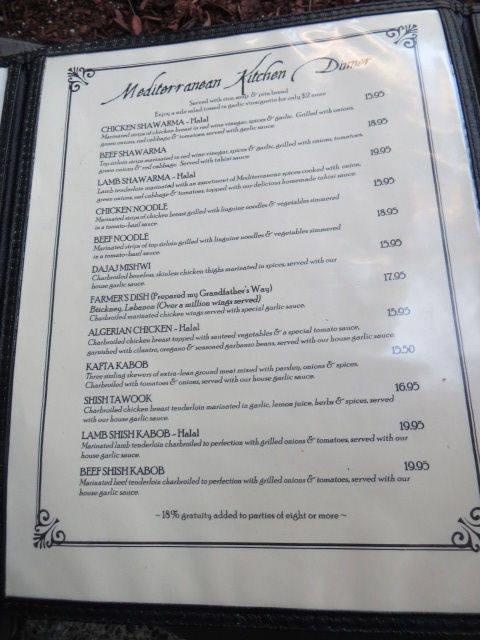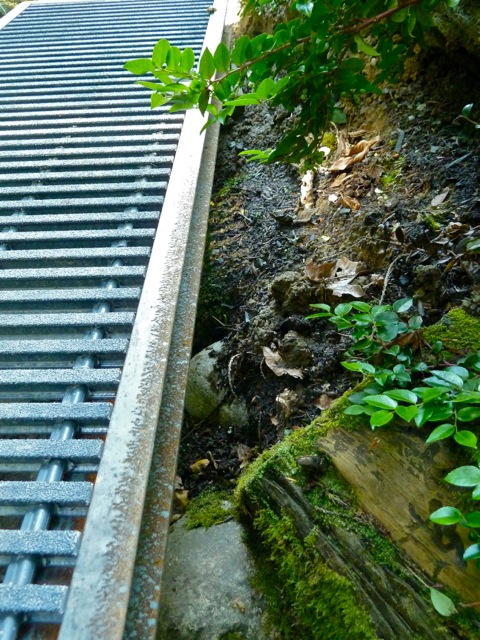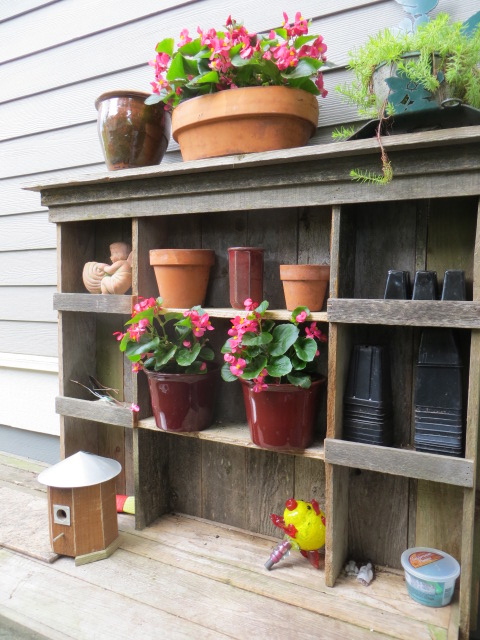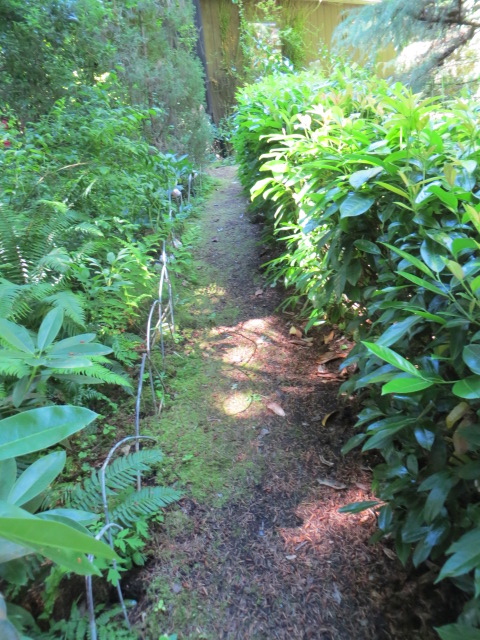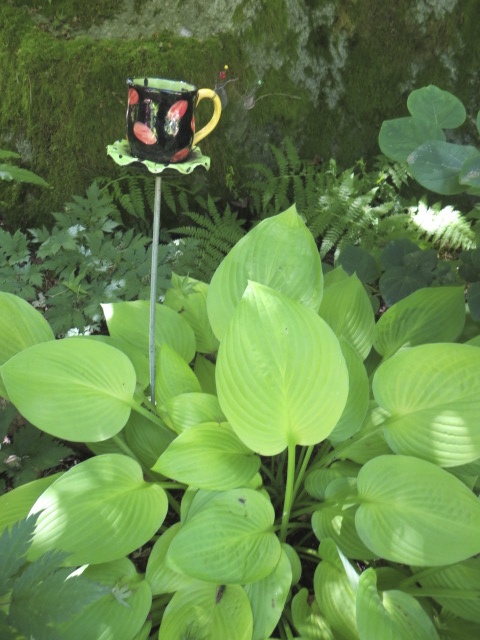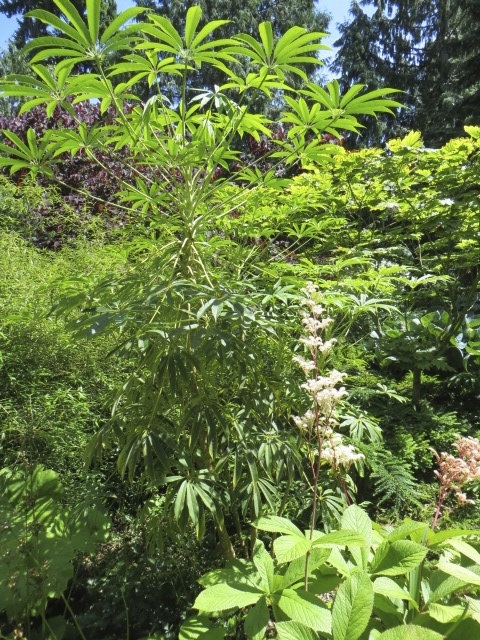Sunday, 22 June 2014
Hardy Plant Society Study Weekend
The Saturday night party was far from the end of the study weekend. No, indeed. We began Sunday morning with early rising to get back to the plant sale when it opened at 8 AM.

early rising heading out the ground level hotel door to the plant sales room (usually a parking garage)
In my hand, I clutched a pain au chocolat, my favourite pastry (no one has it here at the beach!).

one of the perks of civilization, from Tully’s coffee in the hotel lobby
Fueled on pastry and coffee and considerably sleep deprived, I re-entered the plant sales room and gravitated to the Gossler Farms table, where I bought…oh yes, I DID…the $140 Davidia involucrata ‘Lady Sunshine’. (You all thought I had more willpower, didn’t you?) Roger Gossler knew I would be back; he said he had only brought two to the sale, and that it is rare, and was discovered by a small grower in Oregon, and that it will be wind tolerant. Someone had bought the other one, but the second Lady Sunshine waited for me.

plant room

Of course, I would have liked one each of everything.
Do I know where I am going to put the tree? Not really, nor do I know where I will put all my other acquisitions. Billy Goodnick would be appalled but probably not shocked.
I picked up all my plants (two flats of them) from the holding area and schlepped them to our van, so that we would be ready immediately after the morning’s lectures to begin touring. By the time we returned from the day’s tours, the plant sale vendors would all be gone and the big room would be a parking garage again.
By the way, Wilburton Pottery was one of the vendors; I love their tiles and have some at home that I acquired years ago at the NW Flower and Garden Show. I did not look over their wares at the study weekend as I was completely plant focused, but check out their website to see some beautiful things.

a Northwest Perennial Alliance volunteer on guard at the plant holding area…Talk about “Pet’s Corner!”
In the lecture room, we made one last walk around of the display of cut flowers and foliage.

Allan’s photo

Allan’s photo showing how all plants were labeled.







CPNs (Certified Plant Nuts)

Note how fresh the plants look on the fourth day after they were picked. Clearly, volunteers have been fussing with them and refreshing the water and fluffing them up.

more CPNs

Eryngium!

Northwest Perennial Alliance Hardy Plant weekend lectures, Sunday morning
First lecture:


the lecture title
Mary began the lecture and spoke on her own for twenty entertaining minutes. She said this photo proves that in younger days, she had a thing for hippie men:


This garden division is about like me and Allan… if you count the lawn as part of his 20%.
Mary said Ciscoe’s cooking runs to Top Ramen and Brussel Sprouts Surprise. (I’m lucky Allan does the cooking or we would live on packaged salad and couscous.)
I enjoyed every moment of their lecture but was laughing so hard that the only notes I took were:
“windows in garage” [Ciscoe has them, and has tender plants by them in winter; I want some more windows in our garage now]
“Choisya: cut down low in spring”
“Epimedium ‘Spine Tingler’!” [must be a great one!]
“6000 square foot lot” [their size]
Seeing Ciscoe brought back happy memories of the day he visited our garden and transformed a mundane day into a thrilling one.

Second Lecture (after a break for coffee and life-sustaining pastries):

Their lecture title: 24/7/365 and Still Smiling
My interest in this lecture goes way back to when Kelly, with his previous partner, had a tiny storefront in Ballard (a north Seattle neighbourhood near where I lived) called Reflective Gardens. Must have been about 1988 when I walked by and just about fell over at the sight of a passionflower blooming all up a brick wall. I was smitten with their tiny landscaped parking strip garden and went home and dug up my parking strip sod and tried to recreate their design; I had even sketched out their placement of rocks.
Eventually Reflective Gardens moved from Ballard to one of the islands near Seattle.
Years later Kelly met Sue on a plant collecting trip, and, well, love is a burning thing, and makes a fiery ring…they fell into that ring of fire and after what they referred to as a “mess”, they ended up together at Far Reaches Farm. Their nursery (from which I will be mail ordering Roscoeas!) features plants that they have collected (responsibly) from around the world.
My notes:
Cercium…a thistle like thing…must have, doesn’t spread
Castle Howard (where Brideshead Revisited was filmed) is the Yorkshire arboretum?!?
Meianthemum henryi!!
Roscoea…tough as nails…I must start collecting them!!
Meianthemum white and pink, must have!! So big! 6′ high
gold form of Polygantum
Polyganatum…phillinianum?? 9′ with flowers, little hooks to hang onto other plants it climb on…must have!
and so on…some in scrawls I can barely read. Fortunately, they provided a slide list.
This is the sort of lecture we crave at a Hardy Plant weekend, all about plants.

Third lecture:
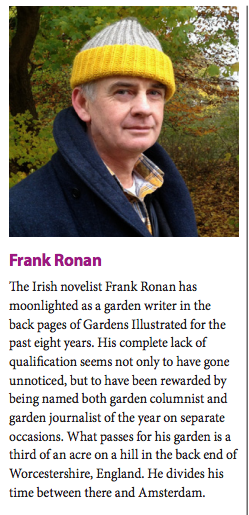
lecture title: The Invisible Garden
my notes:
Two great English gardeners went for a walk in Dungeness…Christopher Lloyd and Beth Chatto…and they came upon a garden that blended into the landscape of sea and shale…
I knew before he said so that they must have found Derek Jarman’s garden, which is also the name of one of my favourite gardening books of all time. I used to lend it to every new client that wanted a beach side garden (back in the days when I took on new clients).

Derek had heard of Beth Chatto and had never heard of Great Dixter (Christopher Lloyd’s garden)!
I thought, Beth wrote the great book The Gravel Garden, and that may be why he had heard of her.
Later, having gone there, Jarman said he loved Dixter because it was “shaggy”.
His idea of a nightmare was Hidcote, which he called Hideouscote. Hidcote is often described as a series of “outdoor rooms”. Frank Ronan said, You go outside to get away from the rooms not to be in another room with no roof.
He said Christo’s exotic garden encroached and enveloped you (his words accompanied by glorious slides).
He said the only place where nature is a good gardener is in the high Alps.

He said England is poor in native flora and that one could learn all of it in two days of concentrated study. That is, he thinks, why the cult of gardening took off in the UK.
He said that Ireland has no moles, no rabbits, and a high water table.
The front of his house has a boring garden in order to say “Move along folks, there’s nothing to see here.”
He says clipped evergreens are “the ultimate statement of control; ‘This did not happen by itself'” and he does not have a fondness for huge yew topiaries. He finds topiary static, admires it but doesn’t want that kind of static stability in his own garden.
He mentioned a novel about a man who lived in a bleak place and kept sneaking out to plant things elsewhere. (I wonder if that is one of his own novels; I intend to read them.)
He says “If the house is ugly, hide it.”
“Be relaxed, don’t try to blow your own trumpet. Don’t say look at me, say look at the plant.
He notes there is a lot of mulching going on in the Pacific Northwest gardens that he toured. “If you mulch, you can’t get the self-sowers. I’d rather be weeding things out than putting them in any day.”
“Nature can decorate things better than you can,” he said of a tree festooned with lichen.
Martagon lilies like to grow in the shady end of a garden.
Labels on plants: “Don’t! I’d rather not know what it is. Labels are scars on the garden.”
Re “The Invisible Garden”: “If you can’t see that it is a garden, it’s a paradise.”
Of course, because I am easily influenced I mentally drop the idea, inspired by the Hummingbird Hill garden mostly, of making my garden more formal with…rooms!
And now…back to garden touring!

We’ve done Whidbey Island and Eastside Splendor, and today we will do the North Seattle Jewels.
Read Full Post »












































































